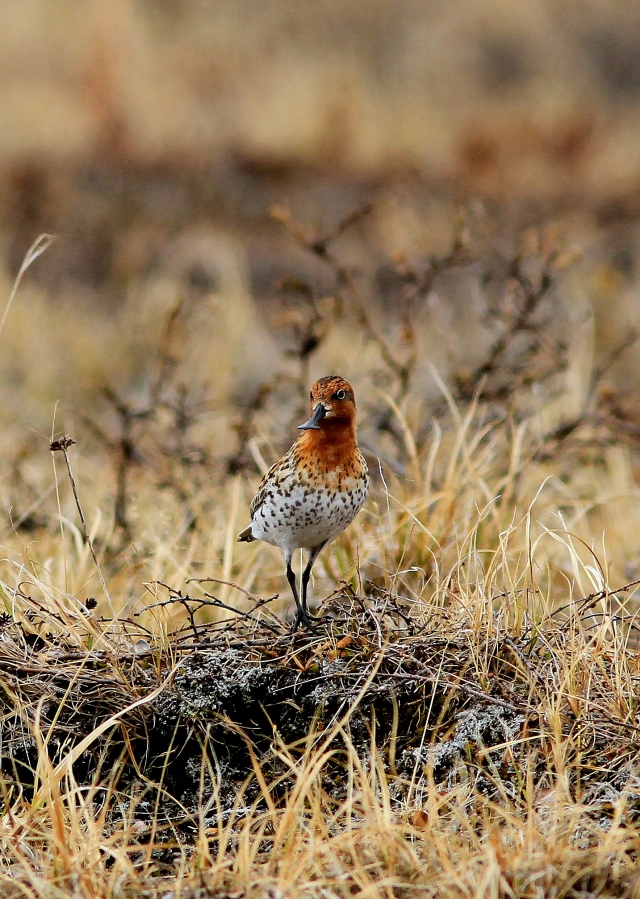Guest Blog By: Sayam U. Chowdhury (Conservation Biologist)
The rivers that carry stories from the Himalayas silently spread their throbbing veins across the mangroves to take on new shapes and spirits in the face of the old weather beaten man, in the starchy yellow ‘saree’ of the newlywed, in the dreams of the ten year old and in the countless faces that live in the tide country. These untold tales of love, livelihood, life, bravery, laughter, tears and death of the Sundarbans are piled in the living library made of liquids and leaves. The fishermen, the crab hunters, the honey collectors, the woodcutters, the forest guards and the pirates: all have their own tales to tell attached to the forest ruled by the tiger and the tide, and flavored by salt and honey.
The immense tidal jungle is mosaicked with hundreds of green-islands in a puzzling labyrinth of winding creeks and rivers. As we travelled through one of these rivers, long lashes of opalescent mist rose from the dark green water at dawn and the river dolphins emerged from the river’s heart every now and then. It seemed as if the river breathed through these dark-grey creatures, and they conveyed a blind message of love to the mangroves every time they flushed. Perhaps this is why these cetaceans are called ‘river dolphins’ and when they vanish, the river dies.
I knew I had never been to that part of the Sundarbans, but as we sailed through certain narrow rivers, a strange sense of déjà vu engulfed me in its grasps reminding me of a summer before the last summer: the endless search for an elusive species called the Masked Finfoot (Heliopais personatus), a nocturnal ride on a ‘dingi’ during a storm, the smell, the salty sweat, the secret and the sorrow.

We headed south towards the estuary, where the rivers lighten their heavy hearts to the enormous ocean and the ocean dilutes bits of its salty tears with ‘mithapani’. I have been to the Sundarbans many times to watch and study birds, especially the forest ones. The quest was rather different this time; we searched for the rare Spoon-billed Sandpiper which was seen on the edge of the egg island in the early 1990s. We aimed to search all possible sites to find the species on newly accreted islands, formed by alluvial sand from the Gangetic plain and silt from the Bay of Bengal deposited through prevailing tides.

We landed on one of these islands, where tiger pugmarks (animal footprints) were printed on the loamy soft soil characteristic of this land, and like our emotions some ran deep into the softness whilst some shallow. And some took its own strange shapes swayed by the wind and wave. The tide was at its lowest ebb, there were no tourist vessels nearby, only two crab hunters with a small boat were visible on the horizon and their wooden crab trap-boxes pinned in a straight line one after another every few meters.
We walked through the silver-grey sand leaving the tangled wall of mangrove on one side and a field of golden grass on the other. A Mangrove Pitta (Pitta megarhyncha) shrilled from the distant, not a single leaf waffled in the tender wind and suddenly a suppressed silence embraced us as if the legendary ‘Bon Bibi’ controlled all the biotic and abiotic elements around us, and we merely existed by the glory of her mercy. The daylight waned and the surreal sun immersed into the sea. Our excitement grew infused with fear,when we noticed fresh pugmarks on our way back to the boat; the tigers of this part of the Sundarbans are not trusted and there were rumors that one woodcutter was taken by a tiger a few days ago from the western block of the area.
One of these people of the tide country was Kalam. His suntanned body and face were further darkened by the constant contact with saline water. His twisted arm and stone-faced appearance made him inimitable amongst the other fishermen on the boat, anchored on the southern tip of Narikelbari of the Sundarbans. He looked familiar, resembling a character from a fiction I was reading recently. We asked him about his story with the sundari forest and with the spirit of the black and golden stripes.

“I was fishing with my brother in ‘poshchim’ (west) Sundarbans when I went deep into the forest looking for firewood when I stared right into blazing eyes of the tiger” says Kalam in reciting his ordeal. Not from the rear but running straight to him, the fearsome predator forced its canine into his right arm. Kalam’s brother heard his agonised scream and tried to save Kalam’s life, shouting and making noise to scare the tiger away. Fortunately for Kalam, the tiger released his prey and vanished into the jungle, leaving an enduring trauma and imprints of its jaws. Kalam wiped his eyes with his worn ‘gamcha’ as he was telling us his saga of life and death. He went back to that very precise moment when he perused death more closely than any of us. Unlike many epic stories, his connection with the forest didn’t go in vain; rather he became a part of the spiritual Sundarbans and breathed through the heart of its roots.
We couldn’t find the bird we were looking for and returned to the city to explore another life. Sundarbans; literally the beautiful forest will always be a special place for me; there is so much to say, so much that thrives in my veins and so much that will remain unsaid.
Meet my guest blogger, Sayam U. Chowdhury 🙂
Assistant Coordinator – Spoon-billed Sandpiper Task Force, Birdlife International & Principal Investigator – Bangladesh Spoon-billed Sandpiper Conservation Project
 This is Sayam’s second contribution as a guest blogger. Beautiful writing with pictures which speak a thousand words. He wrote an earlier piece ‘A Spring for the Spoons‘, do check it out. A dedicated person and conservation biologist making a difference in so many ways every single day.
This is Sayam’s second contribution as a guest blogger. Beautiful writing with pictures which speak a thousand words. He wrote an earlier piece ‘A Spring for the Spoons‘, do check it out. A dedicated person and conservation biologist making a difference in so many ways every single day.
A Note from Geetha:
My apologies for the recent delays in my posts. For the first time in years, been having a flurry of family activities visiting from afar and travelling very long distances to see more family. I would like to take this opportunity to wish everyone a wonderful and festive season ahead 🙂

Merry Christmas Geetha! Simply love reading your blog! ♡
LikeLike
Thank you very much Chithra! I am so glad you like my blog. Hope to have more fantastic stories coming your way.
LikeLike
I could almost feel that tiger’s breath…some wonderful word pictures here from a very foreign place.
LikeLike
Thank you very much Gary! I love his writing style very much, really happy to have him as a guest blogger.
LikeLike
Really nice writing, felt transported. Loved the picture of the spoon billed sandpiper. Interesting blog will be back to read more. All the best for 2016.
LikeLike
Such a lovely comment. Thank you so much! Feedback like this is so motivating. Hope to have you back in 2016. Wishing you a wonderful new year ahead.
LikeLike